Filter by
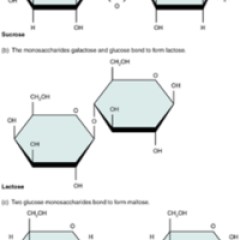
Disaccharides
A disaccharide is a pair of monosaccharides. Disaccharides are formed via dehydration synthesis, and the bond linking them is referred to as a glycosidic bond (glyco- = “sugar”). Three disaccharides are important to humans. These are sucrose, commonly referred to as table sugar; lactose, or milk sugar; and maltose, or malt sugar. As you can tell from their common names, you consume these in…
- Edition
- -
- ISBN/ISSN
- -
- Collation
- -
- Series Title
- -
- Call Number
- 540

Polysaccharides
Polysaccharides can contain a few to a thousand or more monosaccharides. Three are important to the body: Starches are polymers of glucose. They occur in long chains called amylose or branched chains called amylopectin, both of which are stored in plant-based foods and are relatively easy to digest. Glycogen is also a polymer of glucose, but it is stored in the tissues of animals, especia…
- Edition
- -
- ISBN/ISSN
- -
- Collation
- -
- Series Title
- -
- Call Number
- 540

Triglycerides
Triglycerides are composed of glycerol attached to three fatty acids via dehydration synthesis. Notice that glycerol gives up a hydrogen atom, and the carboxyl groups on the fatty acids each give up a hydroxyl group.
- Edition
- -
- ISBN/ISSN
- -
- Collation
- -
- Series Title
- -
- Call Number
- 540
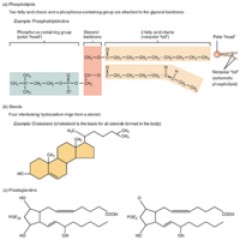
Other Important Lipids
(a) Phospholipids are composed of two fatty acids, glycerol, and a phosphate group. (b) Sterols are ring-shaped lipids. Shown here is cholesterol. (c) Prostaglandins are derived from unsaturated fatty acids. Prostaglandin E2 (PGE2) includes hydroxyl and carboxyl groups.
- Edition
- -
- ISBN/ISSN
- -
- Collation
- -
- Series Title
- -
- Call Number
- 540
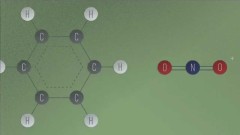
Properties and Chemistry of Benzene | Chemistry for All | The Fuse School
This video is part of 'Chemistry for All' - a Chemistry Education project by our Charity Fuse Foundation - the organisation behind The Fuse School. These videos can be used in a flipped classroom model or as a revision aid. Find our other Chemistry videos here:
- Edition
- -
- ISBN/ISSN
- -
- Collation
- -
- Series Title
- -
- Call Number
- 540
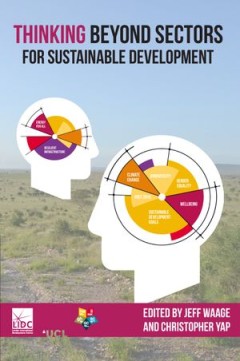
Thinking Beyond Sectors for Sustainable Development
As we move from the era of the Millennium Development Goals to the Sustainable Development Goals it is important to consider how development agendas are set, the progress that has been made over the past 15 years, and how current debates are shaping global development efforts for the next 15 years. This book was produced as part of a University College London-London International Developm…
- Edition
- -
- ISBN/ISSN
- -
- Collation
- -
- Series Title
- -
- Call Number
- 551
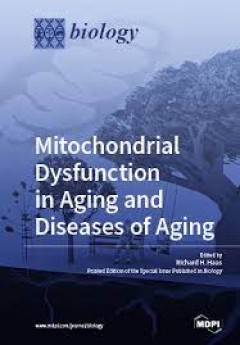
Mitochondrial Dysfunction in Aging and Diseases of Aging
Mitochondria are vitally important cellular organelles and undergo their own aging process becoming less efficient in aged animals including humans. These changes have wide-ranging significance contributing to immune dysfunction (autoimmunity and immune deficiency), inflammation, delayed healing, skin and retinal damage, cancer and most of the degenerative diseases of aging. Mitochondrial aging…
- Edition
- -
- ISBN/ISSN
- -
- Collation
- -
- Series Title
- -
- Call Number
- 500

Nitrification in Fixed Bed Reactors Treating Saline Wastewater
Two fixed bed reactors for nitrification with either polyethylene/clay sinter lamellas (FBR A) or porous ceramic rings (FBR B) were continously run for treating synthetic saline wastewater. Seawater from Hafen Büsum was used as an inoculums. The performance of the system was evaluated under different operating conditions. A better overall nitrification without nitrite accumulation was observed…
- Edition
- -
- ISBN/ISSN
- 9783866446915
- Collation
- -
- Series Title
- -
- Call Number
- 551
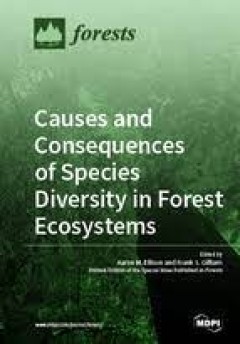
Causes and Consequences of Species Diversity in Forest Ecosystems
What are the causes and consequences of species diversity in forested ecosystems, and how is this species diversity being affected by rapid environmental and climatic change, movement of invertebrate and vertebrate herbivores into new biogeographic regions, and expanding human populations and associated shifts in land-use patterns? In this Special Issue of Forests, we explore these questions fo…
- Edition
- -
- ISBN/ISSN
- 9783039213108
- Collation
- -
- Series Title
- -
- Call Number
- 551

 Computer Science, Information & General Works
Computer Science, Information & General Works  Philosophy & Psychology
Philosophy & Psychology  Religion
Religion  Social Sciences
Social Sciences  Language
Language  Pure Science
Pure Science  Applied Sciences
Applied Sciences  Art & Recreation
Art & Recreation  Literature
Literature  History & Geography
History & Geography